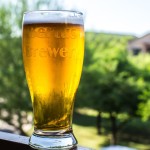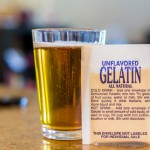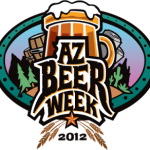The ever-expanding craft beer bubble
As of May 2013, there are 2,514 breweries in the US with an additional 1,559 currently in planning, and I personally don’t believe the market can sustain them all.
Now before the nasty-grams start coming in, let me explain myself. The craft beer market is clearly expanding fast. Craft sales have increased 15.4% in volume YTD, so the US beer consumer is definitely drinking much more craft beer. This isn’t the issue in my opinion, as I think craft beer will continue to steal market share from the big boys. So what is the issue? Well, there’s a few.
First, while it looks like the market definitely has room to grow, I’m not sure there’s room for as many brands. Every brewery thinks they have their own creative spin, but at the end of the day, most have very similar product lines. I know this isn’t an issue in some lesser saturated markets, but in the big cities it certainly is. The sheer number of beers in the aisle is getting ridiculous (I’m looking at you Total Wine & More). Even as someone who drinks his fair share of craft beer and stays pretty abreast with what’s going on in the craft beer world, there are just too many breweries to even remotely keep up with. Hell there’s even a handful of local breweries I’ve yet to try; these are the beers made in my backyard, let alone ones from across the country. There just aren’t enough new things being done, and I hate being different merely to be different (I’m looking at you Rogue, and your bacon donut beer.) For me there’s already too many similar beers on the shelf. Truthfully, how many different ways can you make a Pale Ale?
That issue is compounded by the higher prices of craft beer. Craft beer is getting more expensive, and that’s not necessarily a bad thing. What was $5.99-6.99 for a six pack, is becoming $7.99-9.99. Breweries are selling more hoppy beers than ever, cost of goods has gone up, and let’s face it, it’s a premium product. I’m perfectly ok paying an extra $0.50/bottle for a great beer, but it makes me more hesitant to try a new brand that might suck. A lot of new start up breweries make beer that is just ‘ok’. I don’t want to waste the money, or the calories on beer that is just ‘ok’. Life is way too short.
That issue is compounded by the current trend of breweries moving more of their brands into higher-margin packaging. I’m seeing more and more beers that are exclusively sold in 22oz bombers for 6.99-11.99. That is crazy talk. Deschutes Fresh-Squeezed IPA is a great example. It was a new seasonal release, and it was fantastic. It was also 6.99 for a 22oz bottle, and I’m sorry Deschutes, but I’m not very inclined to spend $0.39/oz for a beer, when I’m used to 6-pack pricing at $0.12/oz. I know there are more costs associated with seasonal and special release beers, but 3x the cost for a 6% ABV beer? No.
That issue is compounded by the fact that IPAs are still the fastest growing segment in the craft market. This is an issue because hoppy beers don’t have a long shelf life. When the local bottle shop has 100 different IPAs, even a good selling brand can sit way too long. So there I am, having to check the dates on every flipping bottle because at least half are well over the recommended drink by date.
That issue is compounded by the fact there are still a ton of breweries that don’t put ‘Bottled-on’ dates on their bottles. This to me is absurd. I’m not going to play Russian roulette with a $9 DIPA bomber when I have no clue how long that beer has been sitting on the shelf. Dust on the bottle? Forget about it. Now this may sound snobbish, or ridiculous to some, but I’ve bought way too many heavily oxidized, old IPAs that I can only wonder what they were supposed to taste like.
And that brings us right back to the start, as it’s compounded by the fact there are 2,514 breweries in the US, with 1,559 more on the way.
So even though I feel the craft market will continue to grow, and grow well, I wonder how sustainable new brewery growth is. I can tell you it’s not a market I’d be ready to risk my entire future in. I’ve heard a number of people say that beer will just become more local. Shit, I try to drink local, but even at that, with over 20 local breweries, it might be 3-6 months before I drink the same local beer.
Amazing beer will always win it’s place in the market, and I’m sure that more than a few of those 1,559 new breweries will make some awesome beers. The problem is, hundreds won’t. They might make good beer, they might even make great beer, but when someone else is making amazing beer for the same price, it’ll be hard to keep the lights on.
Which brings me to my last point. I get asked often, just as many of us homebrewers get asked: Why don’t you open a brewery? My answer lately has been “Because there are 2,500 breweries in the US with 1,500 more on the way. That’s probably already too many, and they all have a head-start on me.”




It's like you took the words right from my mouth. Here in Minneapolis there's been so many breweries opening that make mediocre beer, at some point they will fail. I've been burned way too many times dropping $10 for a six pack of local beer I thought I'd give a shot and it sucked. I love craft beer and the innovation it stands for, but you're exactly right – there are many of the same products being put out. I'll buy one I know is good before I risk my money on the next new thing.
Exactly. It's tough though. I love to support the little guy, and I love trying new beers. But I'm right there with you, too many $9 bombers and $10 six packs for beer that was just meh.
If I can write out a better recipe off the top of my head on the back of my beer napkin, I have a hard time believing that brewery is going to make it in the long run.
Well written, I don't know how many times I've sat there looking at bottled dates of Green Flash West Coast IPA at Total Wine. The beer is already a month and a half old AND it's been sitting on a non-refrigerated shelf at that.
This is one of the reasons why I've increased my small batch brewing (BIAB), I can drink very fresh beer and increase experimentation. In fact, I am about to dry hop a batch of your RuinTen clone tonight!!! Very excited about that one!
My plan is to retire early and go work at an established brewery. Brewing just doesn't pay as much as programming does. 🙂
Spot on! Total wine offers a great selection, but I spend way to much time, like you, looking for dates. One of my closest local breweries is Flying Dog, they have a crazy julian calendar date system which makes things even more of a pain…just put a "bottled on DD/MM/YYYY" and be done with it! It has really tainted my thought process of getting any ipa while out unless I know it is fresh.
CJ, I like the way you think! This is my goal as well, just gotta save up my stash of cash and keep my money working for me. Its hard when your wifes hobby is horses 🙂
I am on the fence about the craft beer market here in the San Francisco Bay area. Here the breweries that are established and opening all have been impressive and seem to have bright futures. The thing that worries me is all these beer bars opening that are trying to have 20+ taps. There have probably been 15 of them that have opened up in the past year or two, and more are opening up. Most of the newer ones are pretty mediocre too, the ones that are good are the ones that older.
Well, as someone who is about to open a brewery in Chicago, I have a slightly different take on this. Yes, lots of new breweries, but note that a lot of those are brew pubs, not production breweries, which is what I'm opening. Also note that many of the production ones are nanobreweries. Mine is going to have a 15 bbl brewhouse. And yes, many or perhaps most of these new breweries are putting out some mediocre, and in many cases just plain terrible, beer.
Here in Chicago we are vastly underserved by local breweries. Our ratio of breweries per capita is very low, much lower than many other cities, so we have plenty of room for local breweries. Most of the breweries starting up here are nanos, something I'm avoiding like the plague. Running a brewery involves much more than making beer and fortunately I've done my homework (and went to professional brewing school), so I'm pretty confident in my success.
I'm 45 years old, started homebrewing in 1991, so I've seen the real bubble in the 1990's. This one is very, very different. There's an awareness and appreciation of craft beer that is unlike anything in the 90's. Back then you couldn't even get distribution, now distributors are coming to me and my doors aren't even open yet. And it goes waaaay beyond beer. There's an entire movement for high quality, non-industrial produced food and drink, made locally perhaps, but not necessarily. I don't think there's a bubble at all. The market will sort itself out, and I fully intend to be able to compete very effectively.
Now, if you want to know why someone would be crazy enough to open a brewery with all these others opening, well, here's my answer:
http://panicbrewing.com/fear-factor
Love your blog!
Regards,
Gary Gulley
Panic Brewing
Chicago, IL
It's awesome getting to hear the perspective of a soon-to-be brewery owner. I definitely agree with you regarding the trend of Americans willing to pay for, and even seek out artisanal products.
You're definitely ahead of the curve since you'll be starting off with a 15BBL brewhouse. The wave of breweries recent has definitely been nanos, and that was more the target of my article. Securing the capital to open a bigger brewery out of the gate makes a big difference.
I've also noticed there are a ton of markets that are under-served right now. Most of the south, much of the midwest, all of Texas other than Austin, etc. The problem I see is, a lot of these new breweries are opening in markets with tons of competition. I think San Diego Proper is up to 70 breweries with a bunch more on the way.
Thanks for dropping a line. Best of luck with the start up. I'll definitely drop by for a pint or four next time I'm in the area!
Small batches are really nice for that reason. Good luck with the RuinTen Clone!
Ya, Julian codes drive me nuts. Sierra Nevada has moved to them. I hate it.
"What day is the 176th day of the year?"
er… let's see 176 divided by 30 is……
"Why can't these people just put mm/dd/yy?"
Sure, and that's another interesting topic. Personally I'm glad to see more bars with big tap lists. That was a "Advance straight to Go and collect $200" card for a little while in the bar industry.
Open with 20+ craft beer taps, and sweet talk your distributor into good kegs, and you made it. Everyone caught on.
I half-expected this to end with "…and that's what really grinds my gears!"
Great post.
Totally agree. What's the point in all these new breweries? Woll they actually add anything new? No. They'll make the same stuff as all the other craft breweries. It's just pepole jumping on the bandwagon, wanting to make money, or not knowing what else to do with their lives.
It is funny you posted this: just yesterday, I was at an event that I brought some growlers of home brew to. I meet this guy who says he just bought a 6 barrel system and him and his friend are going to try and go pro (he bought the system first, before anything else, always a wise first step…). I mean, I don't wish him bad luck, but the East Coast market is already saturated, and what are you going to do different? I've met many other home brewers who think they can open a brewery, because 30 of their non-industry friends tell them they should. Meanwhile, any experienced Cicerone or BJCP judge wouldn't give the beer they brew a second glance. Those 30 friends are not going to spend all their beer money at your place, they're going to expect comp'd drinks at the bar.
It does feel like a bubble, but I don't think it will burst until the customer base catches up with the industry… meaning we've converted all that we can from light lager to craft beer and the demand reaches a plateau. When that happens, I wouldn't want to be XYZ Brewery that makes average beer.
Except a lot of those places tend to have stuff that isn't fresh, lines/taps that aren't clean, and turn their CO2 down waaaayyyy low to make it so they don't foam. In the end though since the kegs are all old, all their beer ends up having near zero carbonation.
I was at a place that had 60 taps a few weeks ago and they had a double IPA I don't think had been made for 3 years.
I think much of it will depend on their business models and their long term strategies. There still seem to be vast swaths of the US where the brand "craft beer" hasn't got much of a foothold and I'm quite sure that there are still many towns and cities without a brewpub or with some room for more.
I believe that, provided they do things well, brewpubs have a stronger chance of success as they don't have to fight for ever more crowded shelf space, offer something other than just beer and can create loyalty by becoming part of a community in a way that perhaps a beer factory can't, at least not so easily.
Great topic! You just reminded of the instance where I saw a FB post of a couple of local guys, near Portland, OR, that launched a Kickstarter campaign to open their own brewery. Pictures of the beer labels with bar codes and coasters and pint glasses and so on have been already designed and waiting production. It's just what you touched on about buddies telling you how great your brew is and that you should open a brew house and you'll kill it. Compliments are nice, indeed, but to kickstart a brewery with all swag and no swill? well that just aint that cool.
One would only need a new spin on a Pale Ale if they were intending to compete with many other breweries- one of my favorite aspects of the 'beer culture' is that most are neo-hippies and believe that finding fancy replacements for the macro lager companies isn't the goal, but rather to expand into small local markets.
DRINK LOCAL BEER.
Don't be scared to open a brewery! Be scared to invest a butt load of money in a big new shiny brewery, sure but, depending on the level of market saturation in your area, start small and go from there.
Great article, great debate!
XOXO
One would only need a new spin on a Pale Ale if they were intending to compete with many other breweries- one of my favorite aspects of the 'beer culture' is that most are neo-hippies and believe that finding fancy replacements for the macro lager companies isn't the goal, but rather to expand into small local markets.
DRINK LOCAL BEER.
Don't be scared to open a brewery! Be scared to invest a butt load of money in a big new shiny brewery, sure but, depending on the level of market saturation in your area, start small and go from there.
Great article, great debate!
XOXO
Isn't it a good thing that only those in a market that produce the right mix of quality, service and price for their target market will survive. It seems that the craft brew market is reaching the same competition that the rest of us in business have to deal with. Obviously there are a lot of factors to opening up a new business, especially a production business like this one, financing everything is a biggy. Assuming your financial ducks are in a row, meaning your family will be good without a paycheck for 1-2 years, then you have to ask your self if your concepts can compete. In my area very few breweries bottle, it seems the younger crowd, spurns the traditional bar, and want a classier atmosphere. Heck even Red Robin has 2-3 local beer taps. As for me, I enjoy going into a tasting room around 4 on friday when I know the brewer will still be there and love it when they sit down and let me twist there ear on their own techniques. There is a risk in opening up any business, but the good news is competition is what drives the market to produce good quality at a good price, craft beer can only get better. While right now I produce things out of metal, I know I could operate a quality brewery, however the service part is what holds me back, I don't think I could be nice to people every day. There are way more factors to entering a market then saturation.
Very true
Brewpubs definitely have a much stronger chance, as they have the if successful, the restaurant revenue stream can really help.
And sure, that goes a long way, but at a certain point, there's 'too many' breweries. I don't think we're there yet, but 2x the current number, and we will be.
Interesting post Scott. Just wanted to chime in to agree with your frustrations regarding old beer on shelves. Checking dates get very old, very quickly – especially as a homebrewer who has access to very fresh beer most of the time (not saying I make better beers than commercial brewers, but I will say it's fresher 9 times out 10). There is a specialty bottle shop that opened in my area recently. Very cool concept – wide variety of great beers and about 8 taps of tastiness that he changes regularly. Definitely targets the beer nerd in us all. I'm all about supporting local business and craft beer but this gentleman is making it difficult for me – maybe 10% of his inventory is refrigerated (all the IPA's sit warm on the shelf) and I've seen packaged on dates in excess of 8 months on occasion. I realize he's running a business and has a great deal to consider, but this is a store specifically for beer nerds. Anyway, I guess what I'm getting at is that I think/hope that a potential benefit of the "craft boom", beyond just the huge numbers of options, could be an improvement in standards for distribution, storage, and freshness of these products as the customer base grows and becomes more knowledgable. I realize this will likely be a very slow process, but I think we may see it happen. I know personally that I'd rather choose from 20 fresh, properly stored beers than 90 6 month old IPA's. An exaggeration? Yes – but ya'll know what I mean. Cheers.
Why would anyone think consumers need a 'new spin' on pale ale? Sure, you'll get some initial sales due to people's curiosity, but does anyone think their 'innovation' of putting garam masala in a beer is really going to make a lasting mark on the craft beer scene? I think some new breweries need to sit back and ask themselves, "What will make someone buy my beer at a bar/bottleshop?" Personally, I'm definitely one to spend money to try a new product, but if it's not either 1) really good, or 2) pretty good, but cheap, I probably won't buy it again. I am much more likely to pay $2 for a Budweiser than $5 for a pale ale from some brewery I've never heard of, knowing there's a 99% chance it's going to taste like caramel malt and cascades. And it's just going to get tougher for other new beers to measure up, because with wider distribution there are some truly great beers that are easier to access.
You can try to stand out with gimmicks, labels, CSA-like distribution plans or reserve memberships, but at the end of the day, if your product isn't better than other options available, you're not going to achieve lasting success.
Well, I found this discussion so fascinating as a window into the US craft scene thatI have to chime in (late) from the other side of the world (West Oz). Hi and congrats on a fascinating blog. I work in a micro over here and I see some close similarities and huge differences. We are behind in the craft boom from your perspective, having had a small first wave in the 90s, most of whom have now become national size, defunct or just another brand in a mega brewery's brand portfolio. You could say I'm involved in the second wave, which largely follows the trends in your country and exploded into the space created by the upsizing of the early craft breweries. I see a great parallel with what one poster described as customers affinity for food and beverages created from natural ingredients on a smaller scale. The difference is just how keen our consumers are for this. $6-$7 a six pack! In my dreams… Try $21+ a six pack (our dollars are similar to yours) or $60 plus a case. And yet customers aren't yet sophisticated enough to demand proper handling of beer. I, as some of you, often see big IPAs sitting on warm shelves and more often than not have to guess how it tasted fresh. This is compounded by the fact that consumers taste the big names from the US WELL past their best and become accustomed to oxidized hops. Finally, marketing as a driving force is alive and well. Our 22oz bombers of the day are craft beer in wine bottles (750ml) which frequently sell for $25 and up.That's $1/oz! Interesting times.